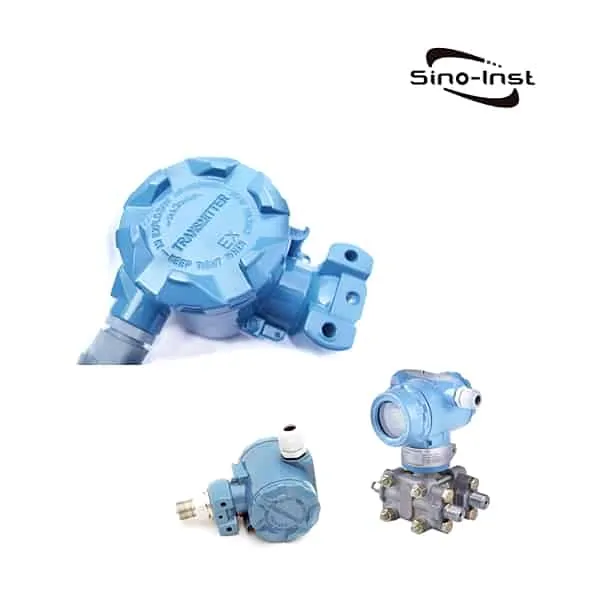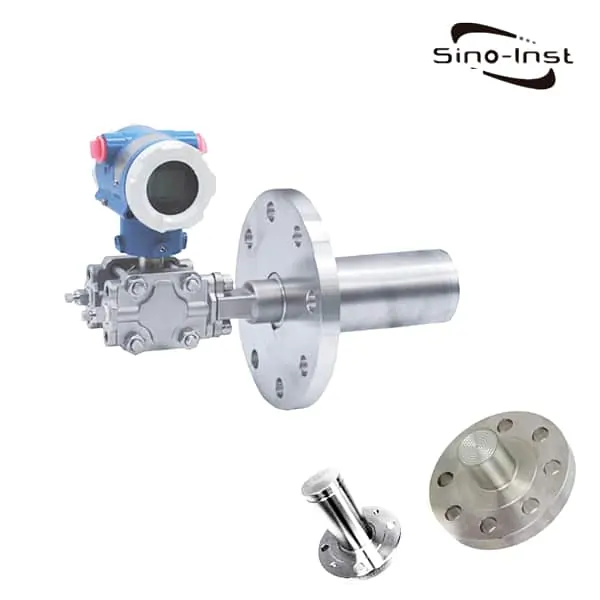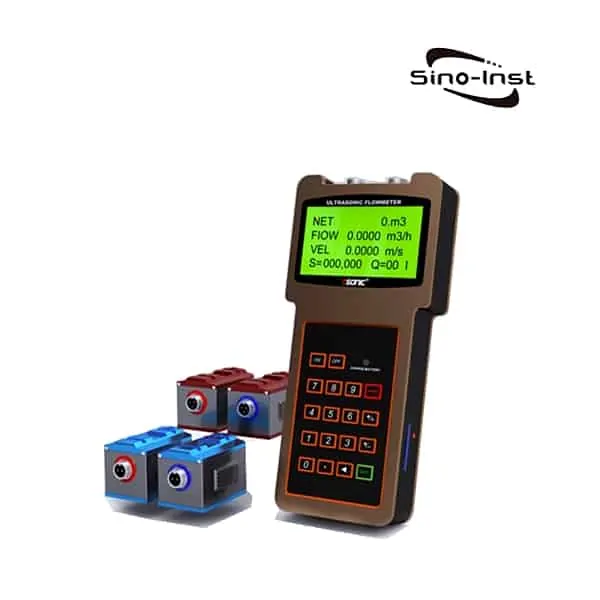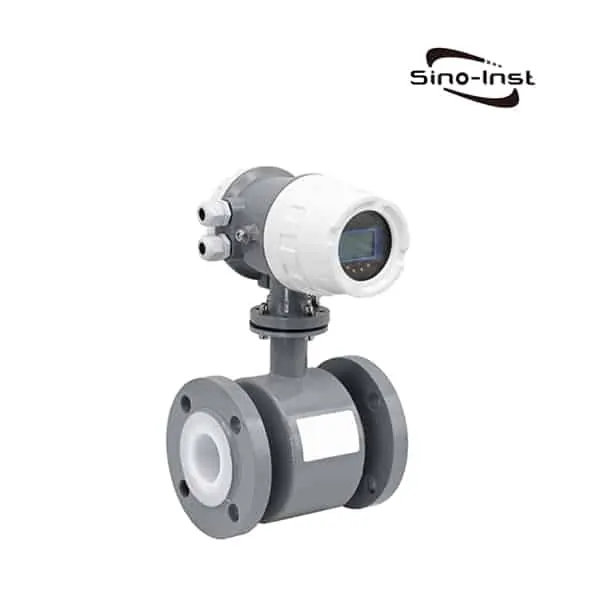Intrinsically safe type is an explosion-proof type of electrical equipment. When purchasing electrical equipment, do you often hear about intrinsic safety? For example, when ordering pressure transmitters or flow meters.
Intrinsically safe instruments are intrinsically safe instruments. Also called safety spark type instrument. It means that the instrument is in the normal state and in the fault state. The sparks generated by the circuit and the system and the temperature reached will not ignite the explosive mixture.

What is intrinsically safe?
Intrinsically safe type is an explosion-proof type of electrical equipment. It limits the electric spark or thermal effect energy that may be generated by the inside of the equipment and the connecting wires exposed to the potentially explosive environment to a level that cannot produce ignition.
ia or ib or ic. ia is the highest and ic is the lowest. See GB3836.4-2010 for details.
By controlling the energy level of the equipment itself, it is lower than the critical condition for igniting explosive gas under normal working or fault conditions. It will not produce sparks or higher than the temperature of igniting explosive gas. It does not need to be shielded or blocked by other means.

By limiting the various parameters of the electrical equipment circuit, or taking protective measures to limit the spark discharge energy and thermal energy of the circuit, so that the electric spark and thermal effects generated under normal operation and specified fault conditions cannot ignite the explosive mixture in the surrounding environment. In this way, electrical explosion-proof is realized. The circuit of this kind of electrical equipment itself has explosion-proof performance. That is to say, it is “essentially” safe. So it is called intrinsically safe. Electrical equipment using intrinsically safe circuits is called intrinsically safe electrical equipment.
Because the circuit of intrinsically safe electrical equipment is inherently safe. The sparks, arcs, and heat generated will not ignite the explosive mixture in the surrounding environment. Therefore, intrinsically safe electrical equipment does not require special explosion-proof enclosures. This can reduce the size of the equipment. Volume and weight. Simplify the structure of the device.
At the same time, the transmission line of intrinsically safe electrical equipment can use glue lines and bare wires. It can save a lot of cables.
Therefore, intrinsically safe electrical equipment has the characteristics of safety and reliability, simple structure, small size, lightweight, low cost, convenient manufacturing, and maintenance, etc. It is an ideal explosion-proof electrical equipment.
However, since the maximum output power of intrinsically safe electrical equipment is about 25W, the range of use is limited.
Intrinsically safe electrical equipment is mainly used in communication, monitoring, signal, and control systems, as well as instruments and meters.
Extended reading: How To Install The Pressure Sensor When Measuring The Flow Pipeline?
What are the specifications and guidelines for intrinsic safety?
ATEX (Europe)
The European Union Directive 94/9/EC often referred to as ATEX (“Atmospheric Explosion”). It is the main European regulation for protection systems and equipment used in potentially explosive atmospheres.
The purpose is to serve as a unified directive to lay the foundation for the necessary health and safety requirements. Replace existing different national and European legislation.
The directive is mandatory for electrical and electronic equipment sold in Europe on July 1, 2003 and used in environments affected by explosion hazards.
The ATEX directive has now been adopted all over the world.
NEC (United States)
The National Electrical Code (NEC) is the basis for all electrical codes in the United States. NEC 500 and 505 cover the classification of hazardous areas and related product identification.
NEC 500 explained that it is a long-term regulation. It has been adopted all over the world, except in Europe. NEC 505 is similar to ATEX.
Intrinsically safe symbol
After evaluation, each approved intrinsic safety device should meet ATEX and NEC or Factory Manual standards. Through the corresponding grade system, you can know which areas, protection types, gas groups, and temperature grades the instrument has been approved for.
Example: Fluke 707ex conforms to ATEX II 2 G Ex ia IIC T4
| – | The ATEX examination mark. This sign is required on all devices for use in European hazardous areas. |
| II 2 G | Regional classification. “II” indicates that the tool has been approved for use in all non-mining areas. “2” indicates the category of the device. In this example, the device is evaluated for use in a ** category* hazardous area. “G” designates the environment, in this case, gas, steam, and moist environment. |
| Ex | Explosion protection is based on European Ex regulations. |
| ia | Explosion protection type, in this case, the energy in the device or connector has been reduced to a safe value. |
| IIC | Gas group. The “IIC” grade indicates the suitability of the * hazardous gas group. |
| T4 | The temperature category is the maximum temperature that may exist on the surface. |
| – | Example of Factory Mutual classification: Fluke 707ex is N.I.Class 1, Div 2, Groups A-D, T4 classified by FM. |
| – | The Factory Mutual approval mark. |
| N.I. | A non-flammable instrument with limited internal energy, so it will not ignite the specified environment during use. |
| Class I | Can be used with gas, steam, and liquid (except for dust, fiber, or filing). |
| Div 2 | It is certified to be used in “Area 2”, and the explosive gas environment that does not usually exist may exist for a short time in rare cases. |
| Groups A-D | After evaluation, it can be used with explosive gases defined in Group A-D. These gases include acetylene, hydrogen, acetylene, and propane. |
Read more about: What Is the Difference Between Class 1 Div 1 and Class 1 Div 2 ?
Definitions of Hazardous Areas
According to the frequency and duration of the explosive environment, the hazardous area is divided into different areas.
The gas field is divided into three areas: Zone 0, Zone 1, and Zone 2.
| Zone 0 | Places where the explosive mixture in an explosive environment continuously appears in the form of gas, vapor, or mist or exists for a long time. |
| Zone 1 | During normal operation, a place where an explosive mixture in the form of gas, vapor, or mist may occur in an explosive environment. Zone 1 is a typical application place for explosion-proof electrical equipment. |
| Zone 2 | During normal operation, it is unlikely that explosive mixtures in the form of gas, vapor, or mist will appear in an explosive environment, and if they occur, they will only occur occasionally and exist for a short time. Normally, “short time” means that the duration is not more than 2 hours. |
The dust site is divided into three areas: Zone 20, Zone 21, and Zone 22:
| Zone 20 | During normal operation, combustible dust appears continuously or frequently, and its quantity is sufficient to form a mixture of combustible dust and air and/or may form an uncontrollable and extremely thick dust layer and inside the container. |
| Zone 21 | During normal operation, there may be places where the amount of dust is sufficient to form a mixture of combustible dust and air but is not classified into Zone 20. This area includes places that are directly adjacent to filled or discharged dust, where dust layers appear and places where flammable concentrations of combustible dust and air mixture may be produced under normal operating conditions. |
| Zone 22 | Under abnormal conditions, places where combustible dust clouds occasionally appear and only exist for a short period of time, or combustible dust occasionally accumulates or there may be a dust layer and generate combustible dust-air mixtures but are not classified into Zone 21. If it cannot be guaranteed to exclude combustible dust accumulation or dust layer, it should be divided into 21 zones. |
Intrinsically safe certification
Intrinsically safe explosion-proof certification technology is currently standardized and suitable for zone 0 technology. For automation instruments, the most commonly used explosion-proof types are intrinsically safe, explosion-proof, and increased safety.
However, due to the rapid development of electronic technology and the continuous birth of low-power electronic devices. So that the promotion and application of intrinsically safe explosion-proof technology has a broader space. Especially because the intrinsically safe explosion-proof type is compared with other explosion-proof types. It not only has a simple structure but also has a wide range of applications. It also has the characteristics of easy operation and convenient maintenance. Therefore, this kind of intrinsically safe explosion-proof, which suppresses the ignition source energy as an explosion-proof method, has been accepted by instrument manufacturers and users.
- Basic principles of intrinsically safe explosion-proof certification technology
Electric sparks and thermal effects are the main sources of ignition that cause explosive hazardous gas explosions. Intrinsic safety is achieved by limiting the energy of two possible ignition sources: electric spark and thermal effects.
Under normal working and fault conditions, when the energy of the electric spark or thermal effect that the meter may produce is less than this energy. It is impossible for the instrument to ignite explosive dangerous gas and cause an explosion.
The principle is to start with limiting energy. Reliably limit the voltage and current in the circuit to an allowable range. In order to ensure that the electric spark and thermal effects generated by the instrument in normal operation or short-circuit and component damage, etc., will not cause the explosion of dangerous gases that may exist around it.
- Features of intrinsically safe explosion-proof certification technology
Intrinsically safe explosion-proof technology is actually a low-power design technology. Usually, for hydrogen (IIC) environment, the circuit power must be limited to about 1.3w.
It can be seen that intrinsically safe technology can be well applied to industrial automation instruments.
Compared with any other explosion-proof type. The use of intrinsically safe explosion-proof technology can bring the following technical and commercial features to industrial automation instruments:
- No complicated design and manufacturing process is required. A bulky and heavy flameproof enclosure. Therefore, the intrinsically safe instrument has the characteristics of simple structure, small size, light weight and low cost. According to data, the cost ratio of establishing an intrinsically safe and flameproof switch transmission circuit is about 1:4.
- Maintenance, calibration and replacement of some parts of the instrument can be carried out under electrified conditions.
- High safety and reliability. The intrinsically safe instrument will not reduce the safety and reliability of the instrument due to the loss of the fastening bolts or the corrosion of the casing joint surface, scratches and other man-made reasons
- Because intrinsically safe explosion-proof technology is a kind of “weak current” technology. Therefore, the use of intrinsically safe instruments can avoid the occurrence of electric shock accidents of on-site engineering and technical personnel.
- Wide application range. Intrinsically safe technology is the only explosion-proof technology applicable to hazardous locations in Zone 0.
- For simple devices like thermocouples. No special certification is required to access the intrinsically safe explosion-proof system.
In summary, for automated instruments, intrinsically safe explosion-proof technology is an ideal explosion-proof technology. It will also be widely used in the design of Fieldbus intelligent instruments and their systems.
Intrinsically safe vs explosion-proof

It is often necessary to use explosion-proof instruments in industrial sites. The general industrial explosion-proof instruments are mainly explosion-proof and intrinsically safe. So, how to understand the difference between them?
Read more Intrinsically Safe vs Explosion Proof Pressure Transmitters
Choose the right intrinsically safe device for your application

Explosion Proof Pressure Transmitter
SIEP489 Explosion proof pressure Transmitter is a microprocessor-based high-performance transmitter. SIEP489 has flexible pressure calibration, push button configuration, and programmable using HART® Communication. We also supply industrial pressure sensors, and explosion proof differential pressure transmitter.
All our electronic pressure transducers can be offered with Explosion-proof. Select explosion-proof pressure transmitters with Ex d certification and 4-20mA output signals for installation. These installations require the use of equipment and enclosures designated as containing internal explosives. This prevents ignition of the explosive environment surrounding the equipment ( Specified) Flameproof area.
Intrinsically Safe Flow Meter
When do I need to choose an explosion-proof or intrinsically safe flowmeter?
Please remember that when you need to measure the medium is flammable and explosive. Be sure to tell the flowmeter manufacturer. Choose intrinsically safe or explosion-proof flow meters.
For example, to measure diesel oil, turbine flowmeters are used. The explosion-proof model must be selected.
Another example is measuring hydrogen. Use vortex flowmeter. The intrinsically safe model must be selected.
Sino-Inst offers a variety of Intrinsically Safe vs Explosion Proof Pressure-Level-Flow Transmitters for industrial pressure measurement. If you have any questions, please contact our sales engineers.

Wu Peng, born in 1980, is a highly respected and accomplished male engineer with extensive experience in the field of automation. With over 20 years of industry experience, Wu has made significant contributions to both academia and engineering projects.
Throughout his career, Wu Peng has participated in numerous national and international engineering projects. Some of his most notable projects include the development of an intelligent control system for oil refineries, the design of a cutting-edge distributed control system for petrochemical plants, and the optimization of control algorithms for natural gas pipelines.












